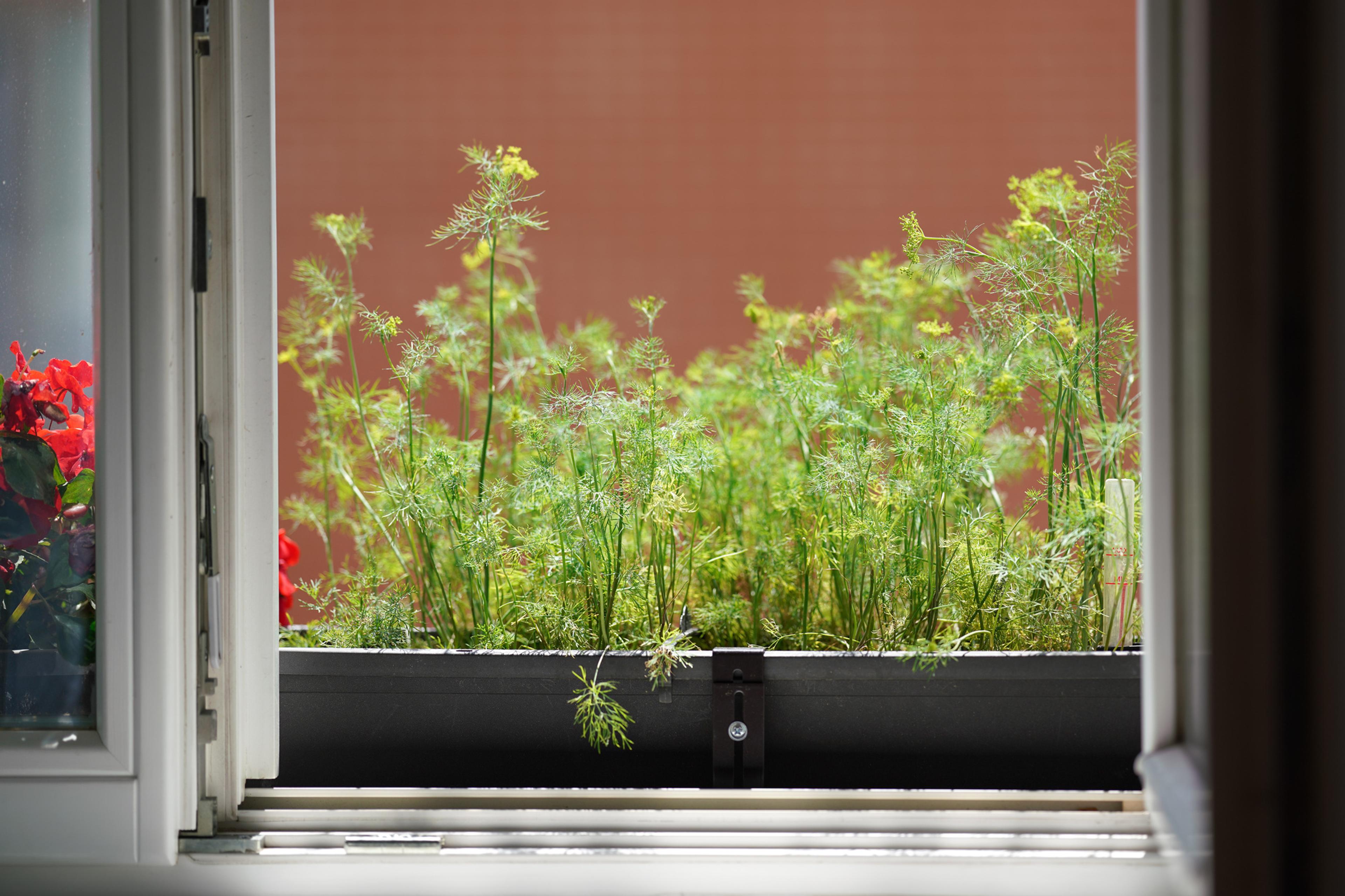Window box gardening offers a sophisticated yet manageable approach to urban horticulture. Ideal for individuals with restricted outdoor spaces or busy schedules, this method seamlessly integrates with various lifestyles. This article aims to furnish you with the knowledge you’ll need—from choosing the right box to caring for your plants. Prepare to enhance your living space with this elegant form of gardening.

Why Window Box Gardens?
Window box gardens aren’t just aesthetically pleasing; they come with a host of practical advantages. Firstly, they are excellent space-savers. No sprawling garden or large patio is needed to enjoy a burst of nature right outside your window.
Secondly, maintenance is notably straightforward. With easier access and less area to cover, watering and pruning become less time-consuming tasks. Lastly, one of the most appealing features is the versatility in plant choice. Whether you lean toward vibrant flowers or practical herbs, window boxes accommodate a diverse range of flora.
Types Of Window Boxes
When starting your window box garden, selecting the right type of box is crucial. The material you choose can significantly affect your plants’ health and your box’s longevity.
Wood
Wooden boxes are often chosen for their natural aesthetic, seamlessly blending with plant life. They also provide good insulation for soil, maintaining a consistent temperature. However, wood can be susceptible to rot and may require frequent maintenance, like painting or sealing, to prolong its life.
Plastic
Plastic window boxes are lightweight, affordable, and resistant to rot. They are also available in a wide variety of styles and colors. On the flip side, plastic can become brittle over time, especially when exposed to extreme temperatures. Additionally, they may lack the natural look some gardeners prefer.
Metal
Metal boxes are durable and often come in sleek, modern designs. They are less likely to degrade over time, offering a long-lasting option. The downside is that metal can conduct heat, which may lead to soil drying out quickly. Also, some metals may rust if not properly treated.
When choosing the right box, consider your local climate, desired aesthetic, and willingness for upkeep. If you live in a hot area, metal boxes might not be ideal due to heat conduction, whereas wood is better for colder climates. Aesthetically, wood suits a rustic look, while metal and plastic are better for a modern vibe. If low maintenance is a priority, opt for metal or plastic over wood.
Location And Sunlight
Location is crucial for determining how much and what quality of sunlight your plants will get. If your window doesn’t get much sun, you might want to look intowindow box ideas for shade. Sunlight remains essential for any garden; insufficient light may result in weak plants, while excessive sunlight can cause them to wilt or scorch.
Different plants have unique sunlight requirements, ranging from full sun to partial shade. For example, herbs like basil and rosemary thrive in full sun, while plants like impatiens and ferns prefer a bit of shade. Understanding the specific sunlight needs of your chosen plants is key to achieving a lush and vibrant garden.
Soil And Drainage
The ideal soil for window boxes is a well-aerated, fast-draining mix, often enriched with organic matter. A potting mix designed for container gardening generally works well, as it provides the necessary nutrients while preventing soil compaction.
Proper drainage is crucial to prevent root rot, a common issue in container gardens. Stagnant water can suffocate plant roots, depriving them of essential oxygen. Thus, ensuring good drainage is not just beneficial but vital for plant health.
For those looking to improve drainage, several DIY strategies can make a significant difference. One effective method is to drill extra holes at the bottom of your window box if it doesn’t already have sufficient drainage. Another option is to place a layer of gravel at the box’s bottom, which can help water flow more freely and prevent root rot.
Best Plants For Window Boxes
Selecting the right plants for your window box can dramatically affect your gardening success. For beginners, it’s advisable to start with easy-to-grow varieties that can thrive in confined spaces. Here are some examples:
- Petunias: These colorful blooms need at least six hours of sunlight and prefer well-drained soil. Deadhead spent flowers to encourage new blooms.
- Marigolds: They love the sun and aren’t fussy about soil. Water them at soil level to avoid leaf diseases.
- Basil: Requires at least six hours of sunlight and well-drained soil. Harvest regularly to encourage bushy growth.
- Chives: They can thrive in full sun but can tolerate some shade. Keep their soil consistently moist.
By selecting any of these beginner-friendly plants and following the associated care guidelines, you’ll be well on your way to enjoying a lush, productive window box garden.
Planting Techniques And Maintenance
Creating a thriving window box garden hinges on two main aspects: how you plant your seeds or transplants and how you maintain them thereafter.
To plant seeds, evenly scatter them across damp soil and lightly cover them with either soil or vermiculite. For transplants, dig small holes in the soil and insert the plants, carefully packing soil around their roots. Ensure adequate spacing between both seeds and transplants to allow for growth and proper air circulation.
Keeping the soil consistently moist is key, but remember: different plants have different thirst levels. When it comes to watering methods, you have choices. A watering can with a fine rose head helps reduce soil erosion.
As for fertilizers, you’re not short on options either. Organic enthusiasts can opt for compost or worm castings. If you’re leaning towards synthetic options, water-soluble fertilizers are convenient. Just use them sparingly to avoid throwing your soil’s nutrients out of whack.
Conclusion
Unlock the potential of even the smallest spaces through the art of window box gardening. From selecting the right soil and plants to mastering planting techniques and maintenance, each choice sets the stage for a flourishing mini-garden. Embrace these tips and transform your window into a lush, captivating oasis.


Comments are closed.